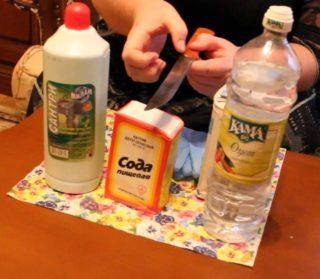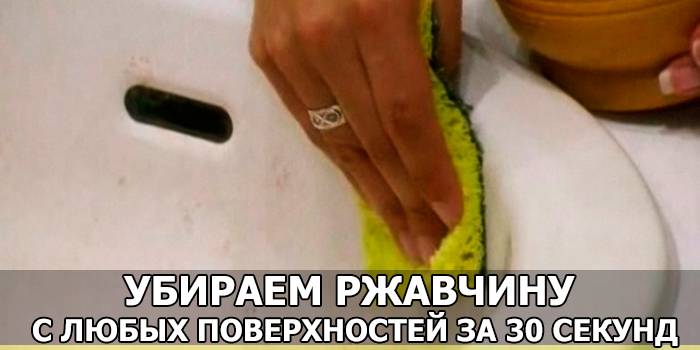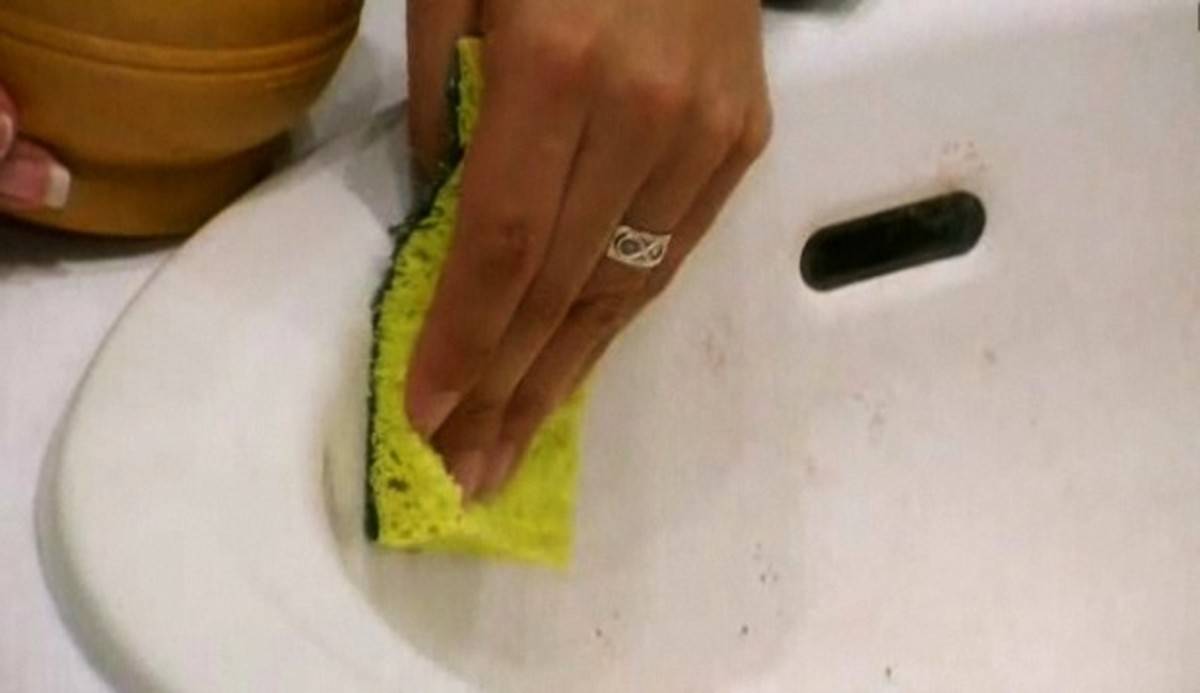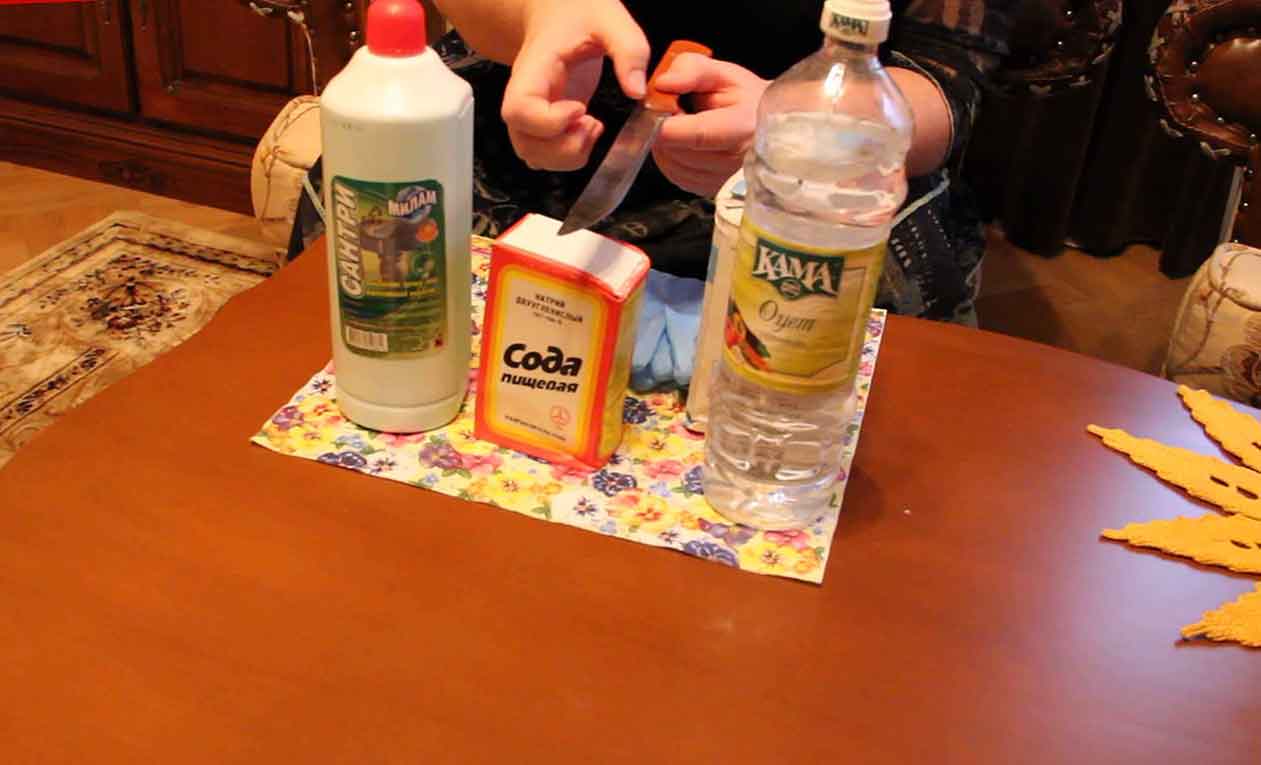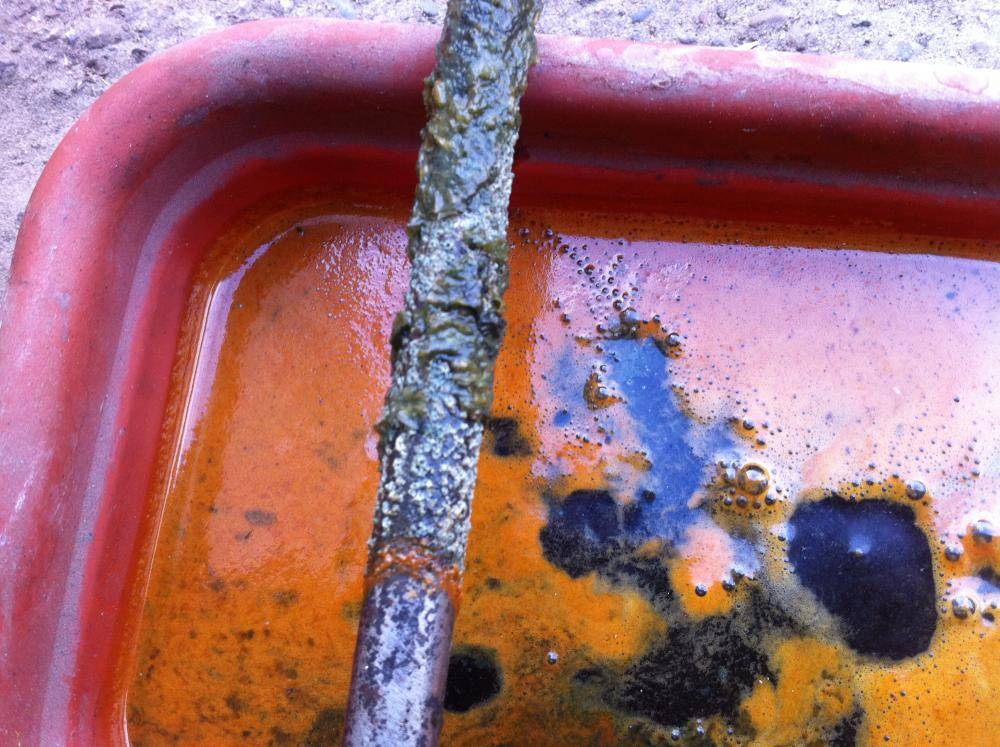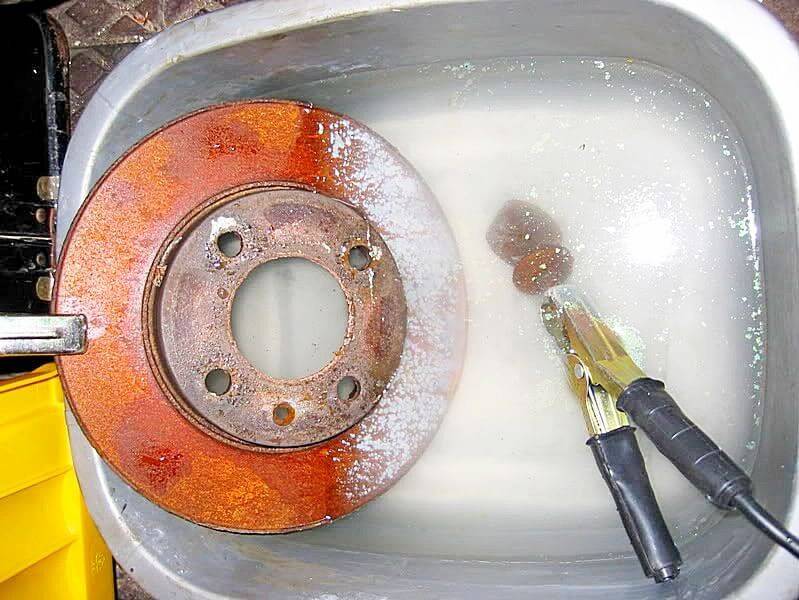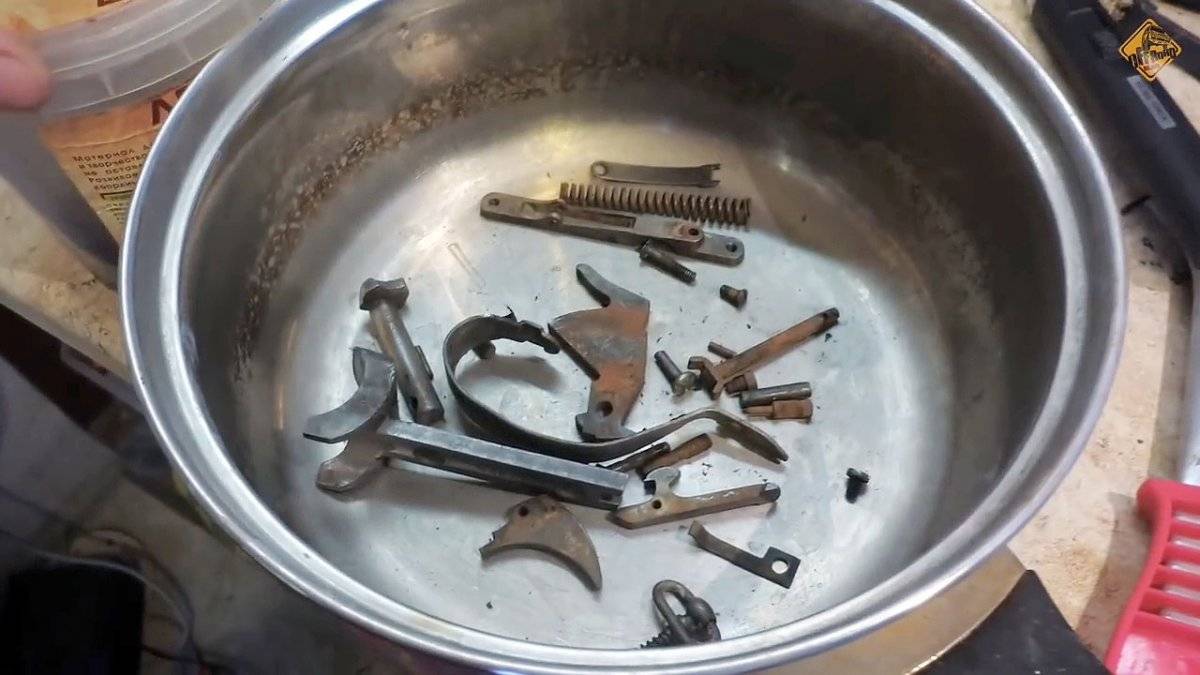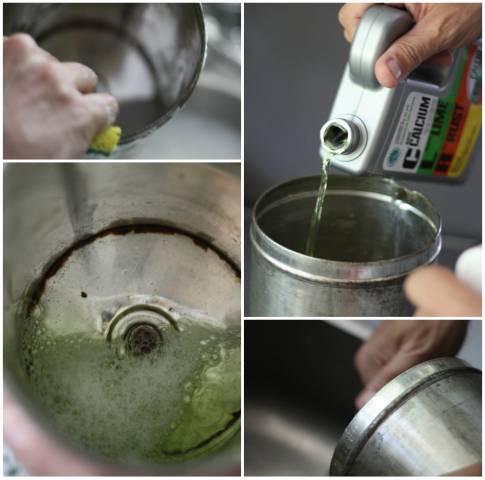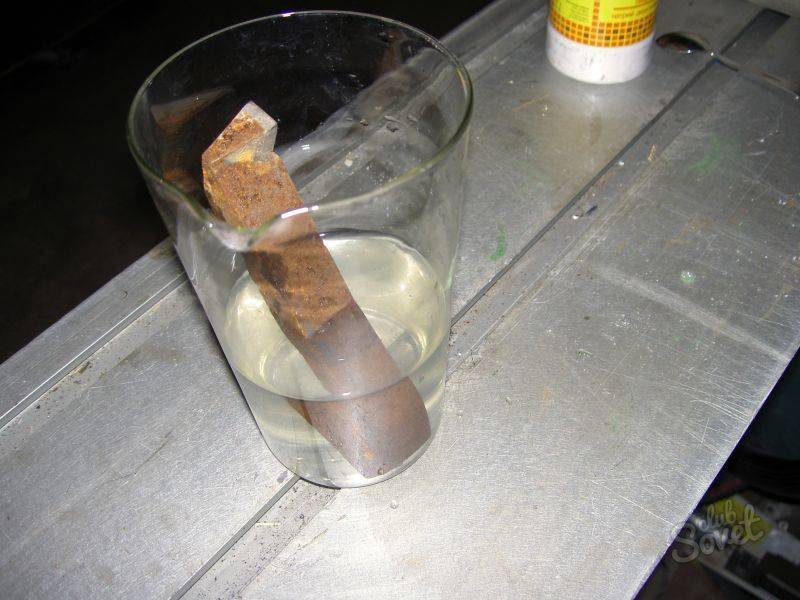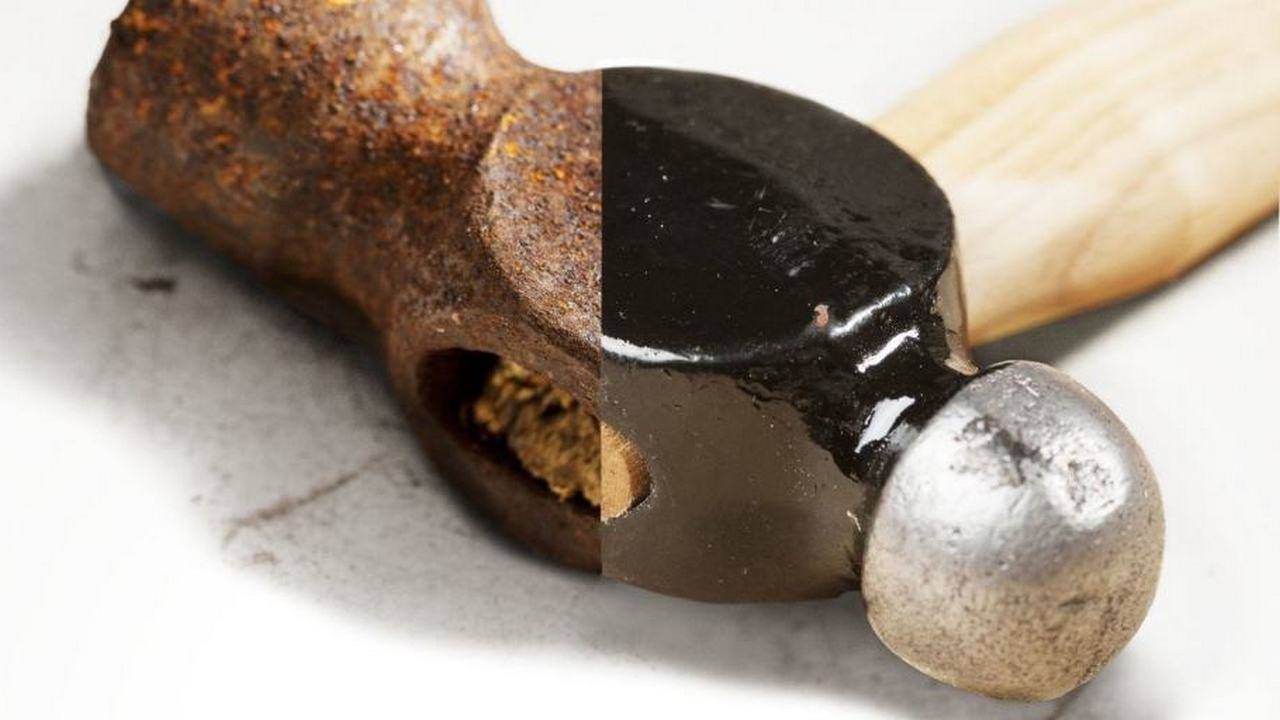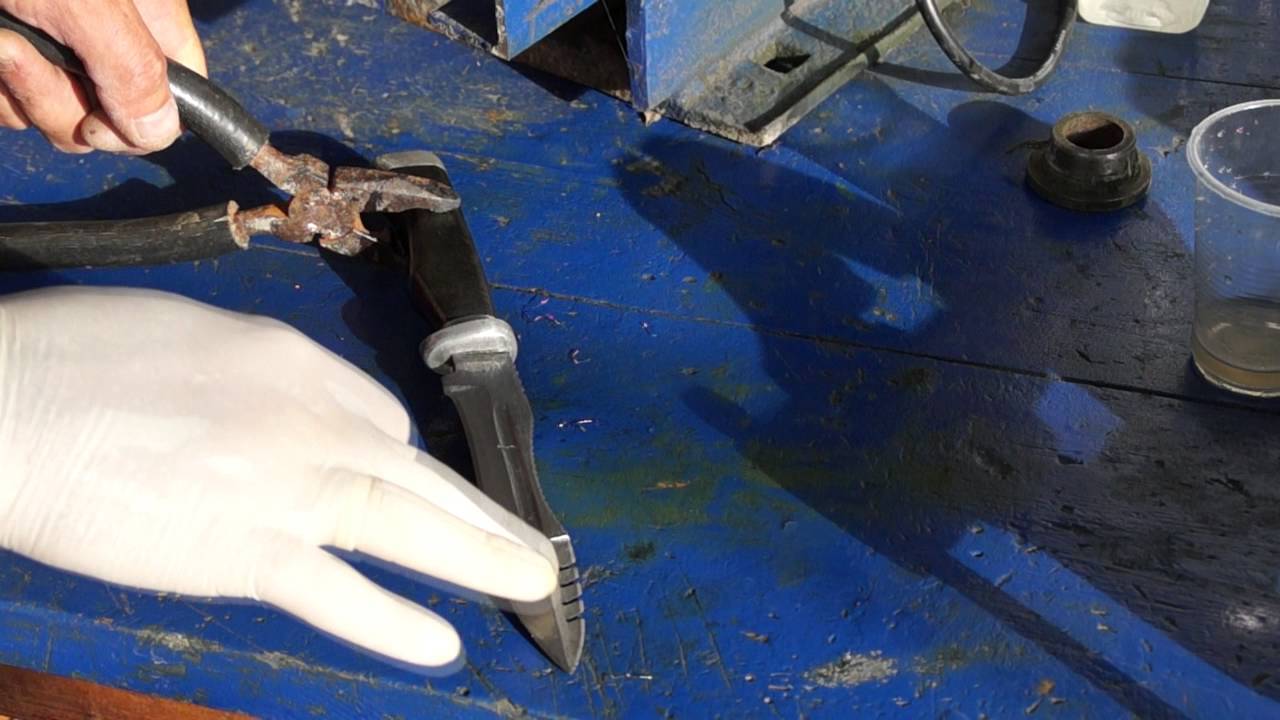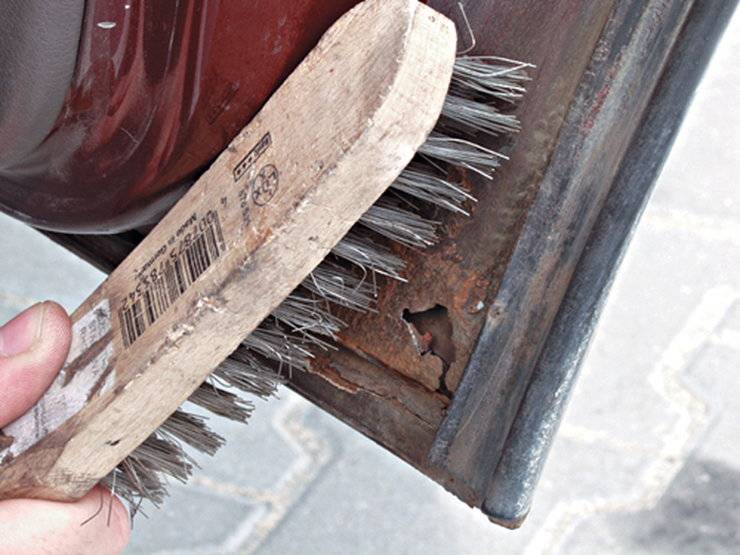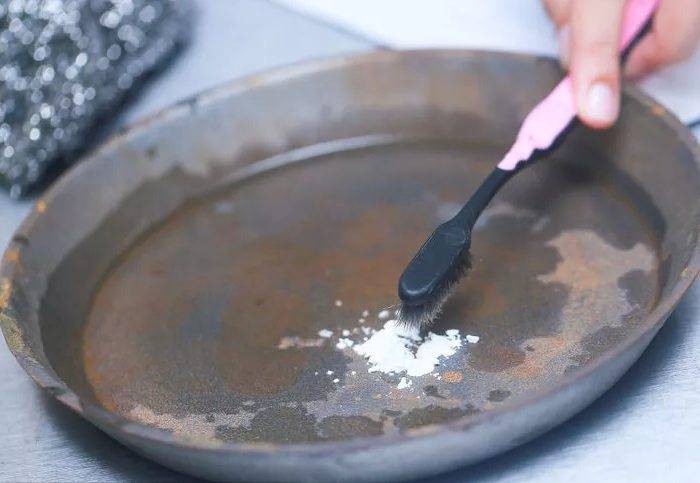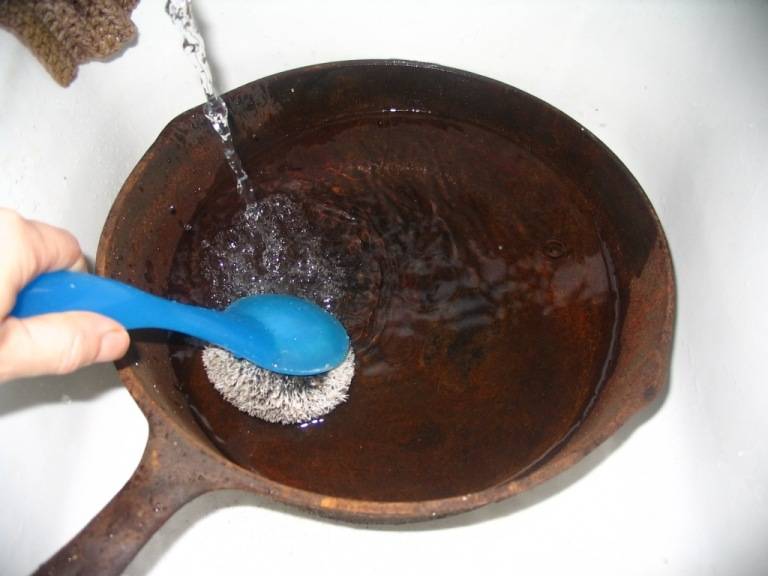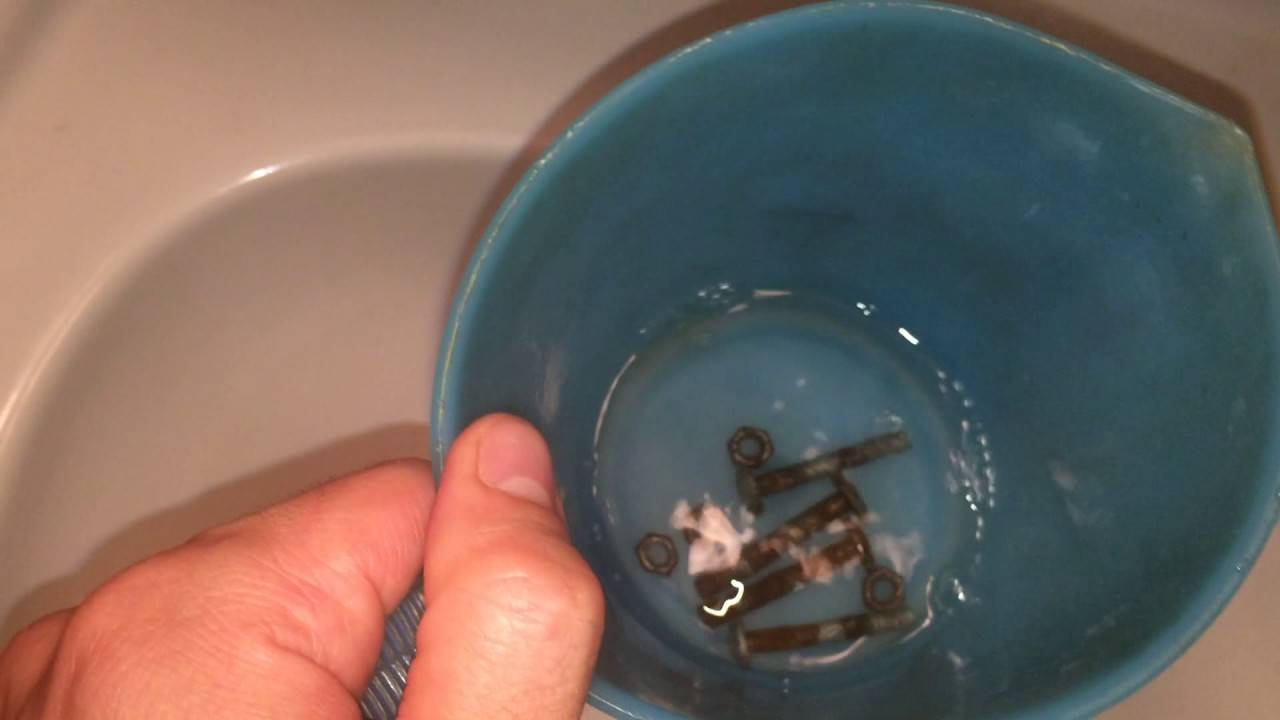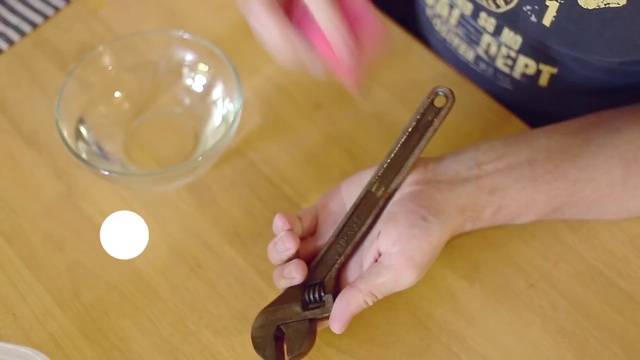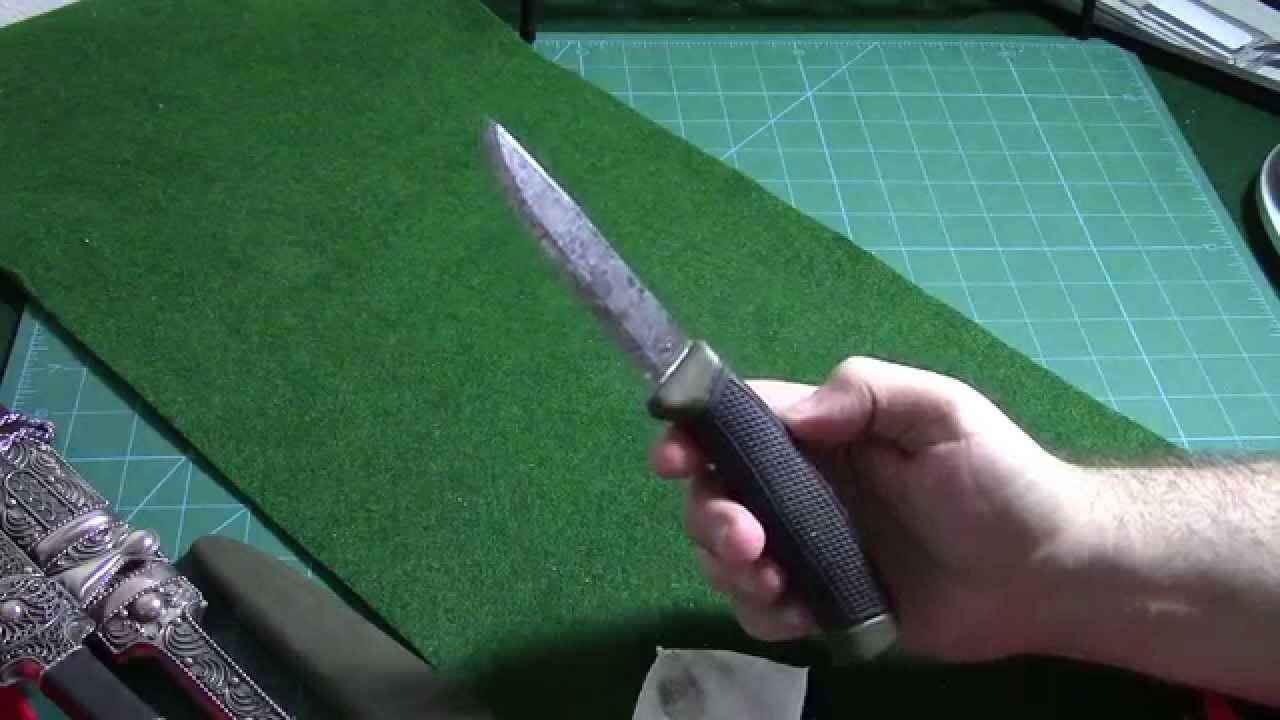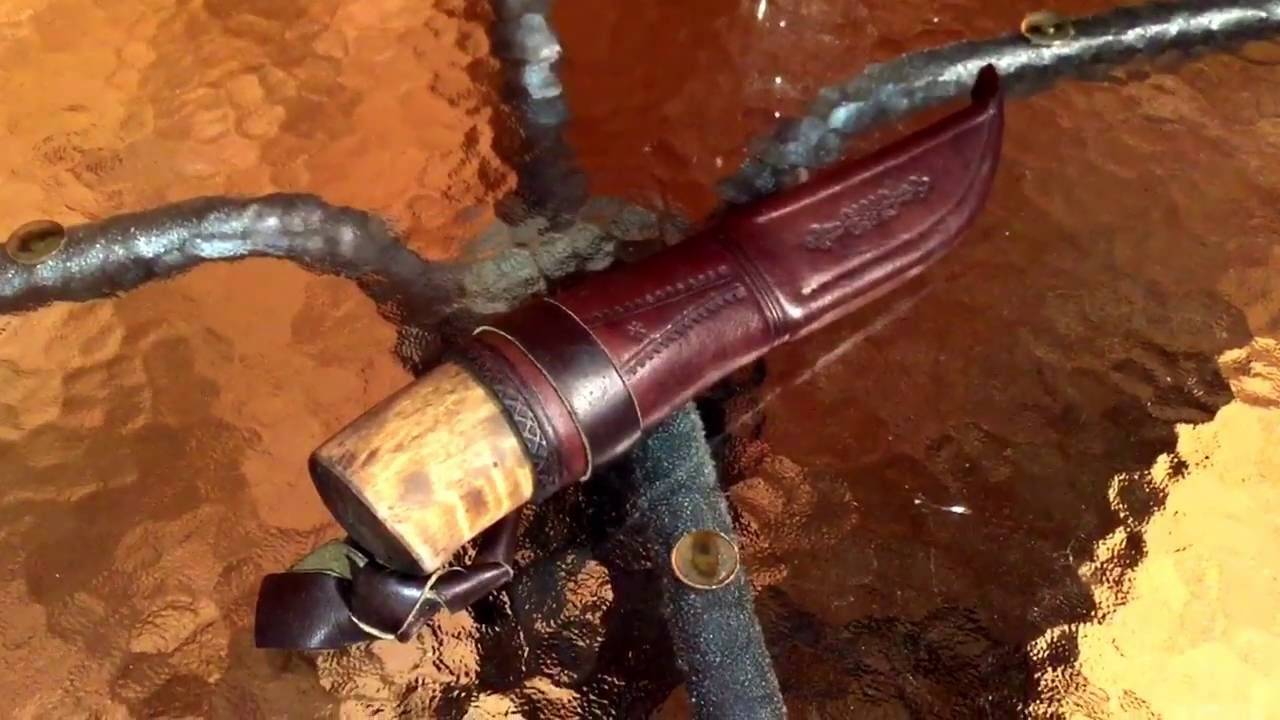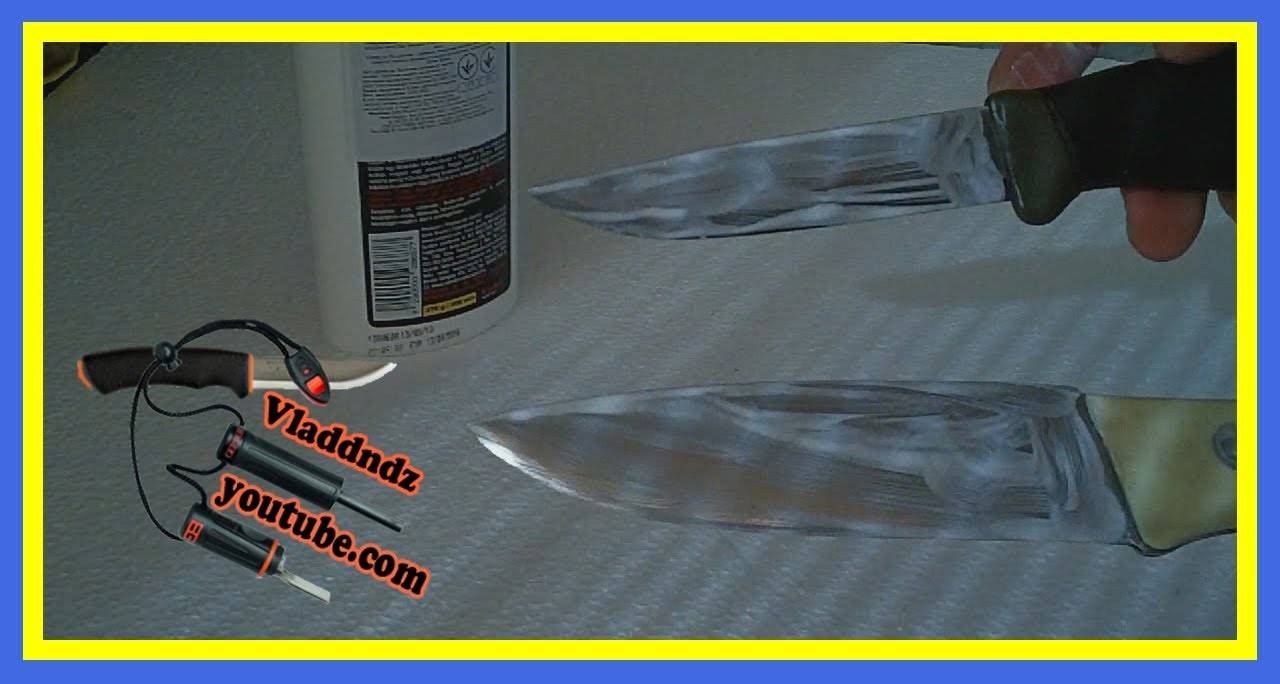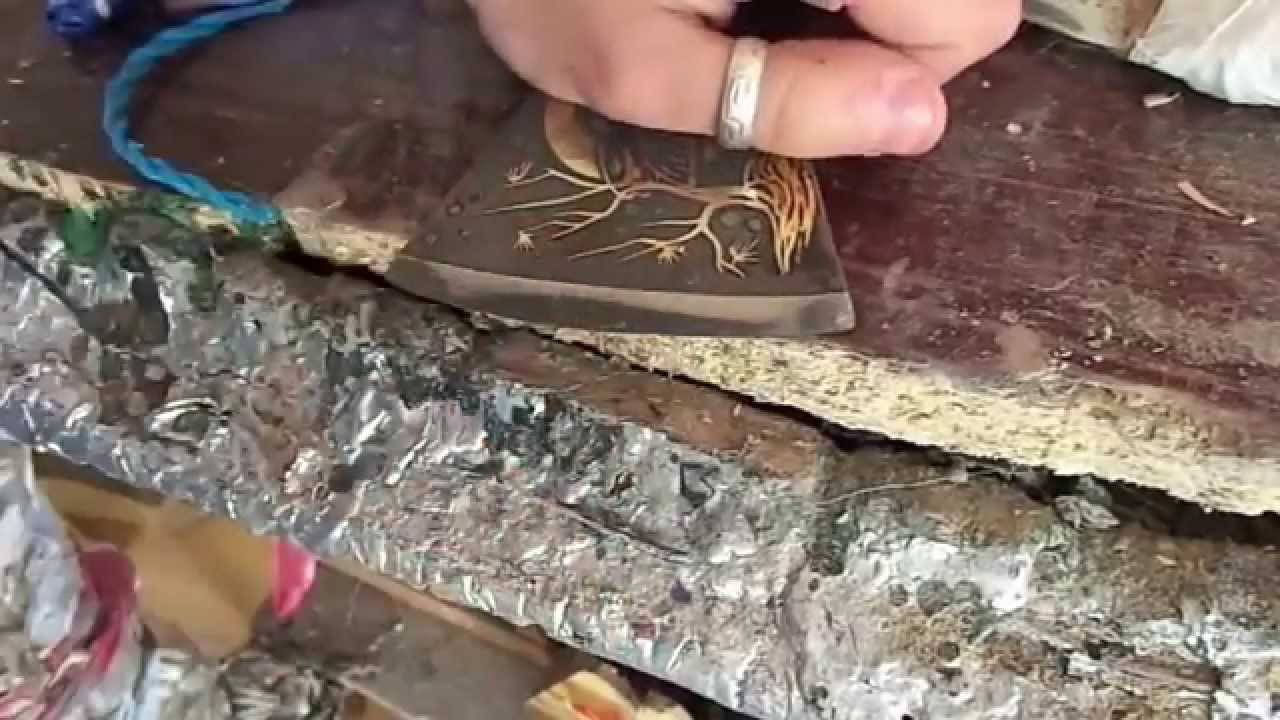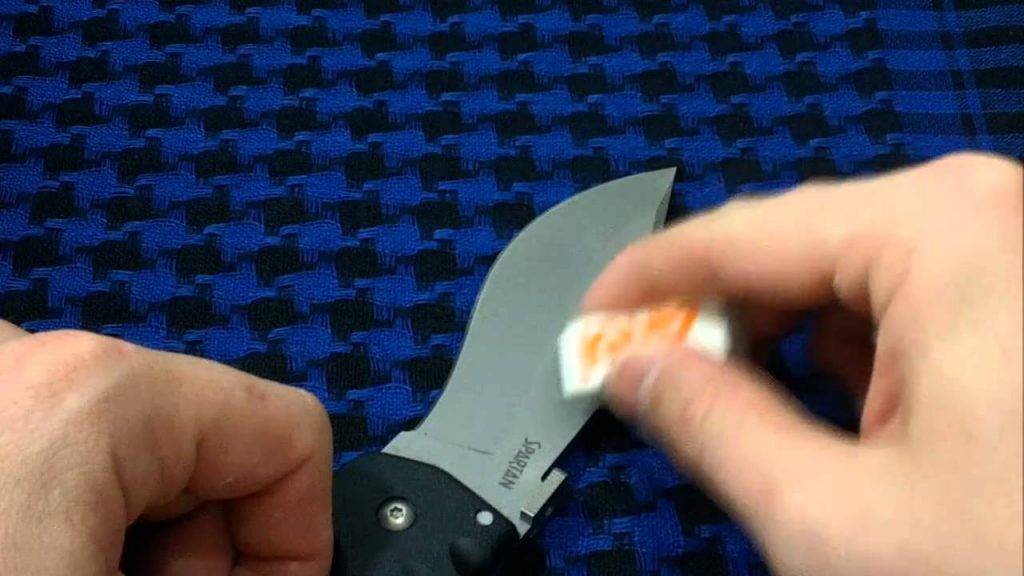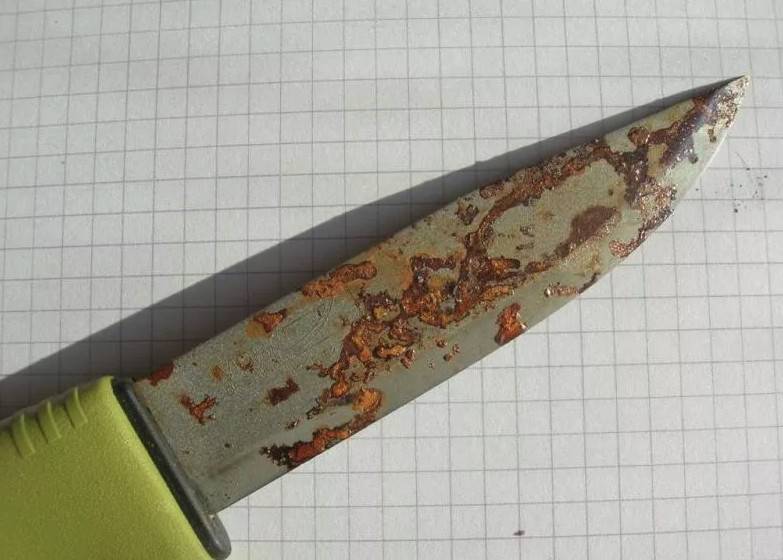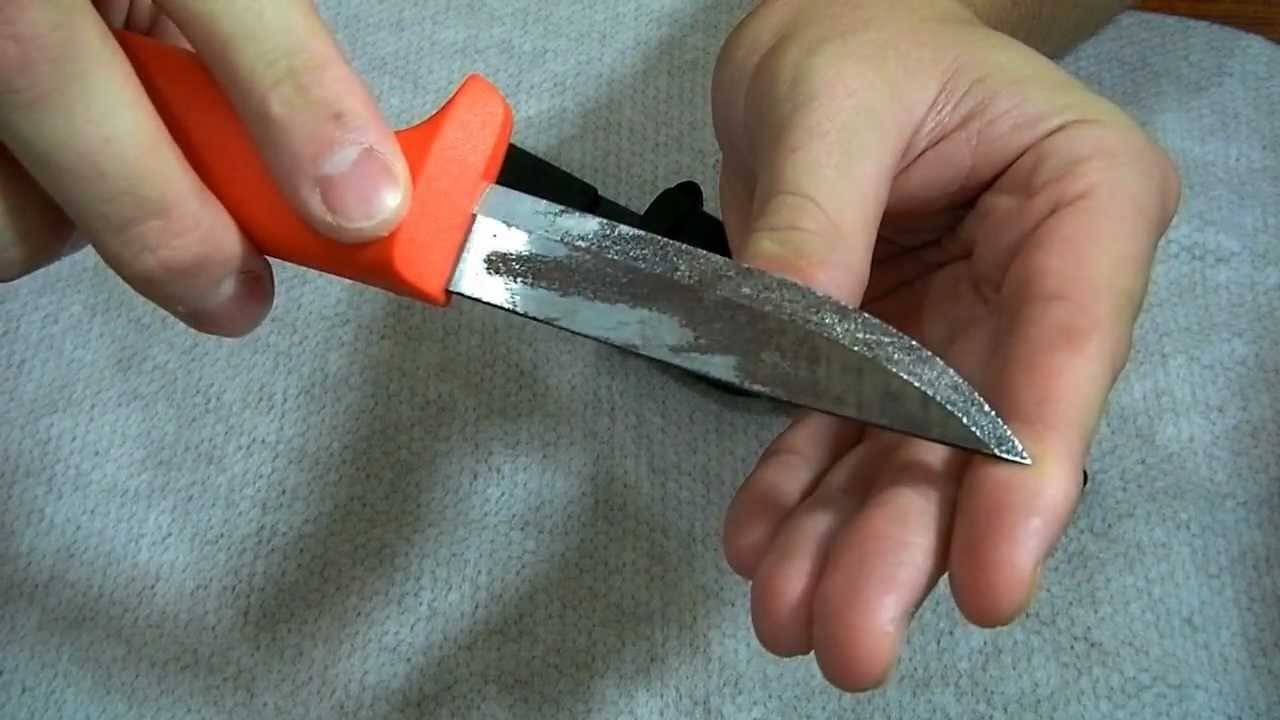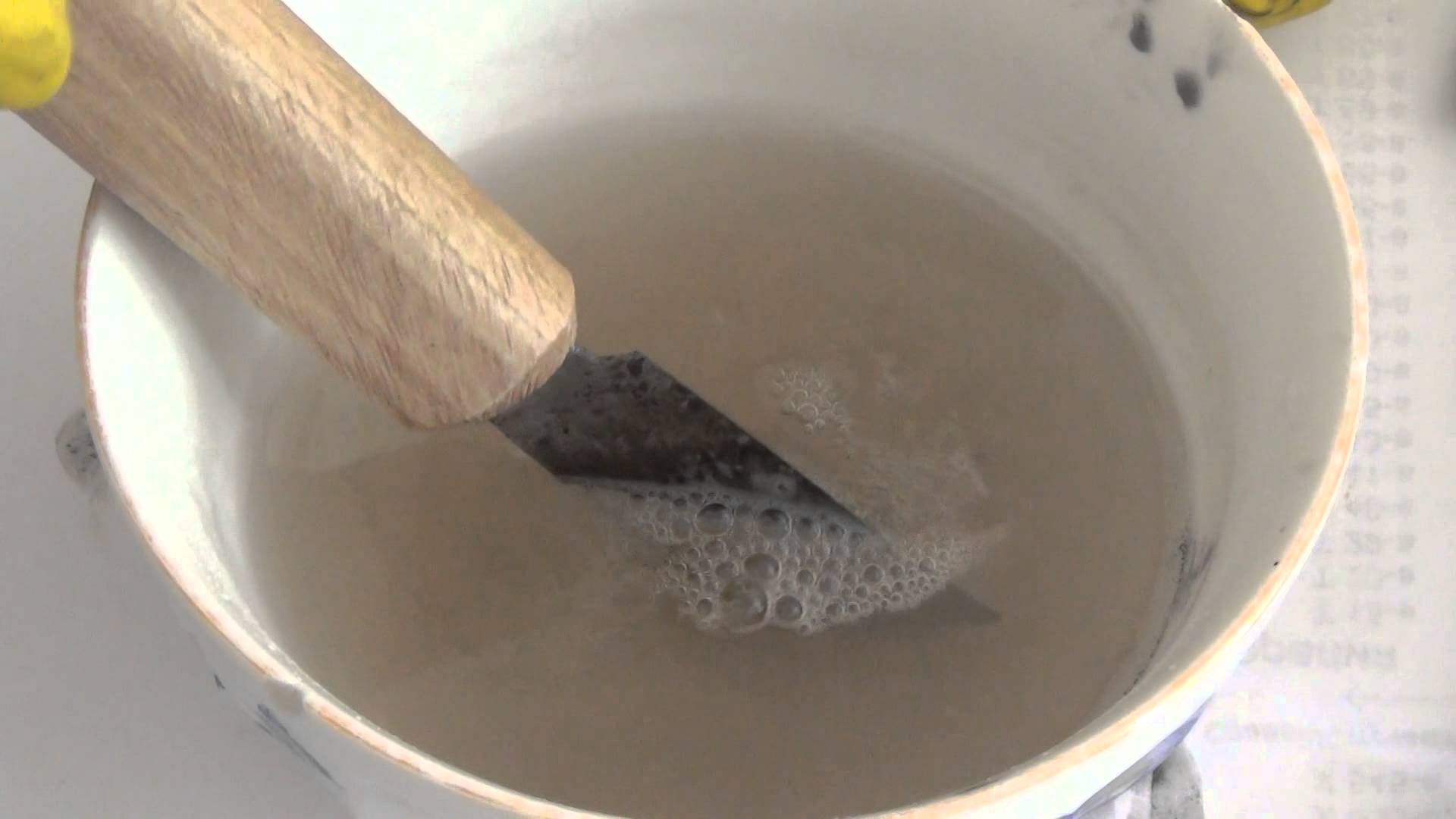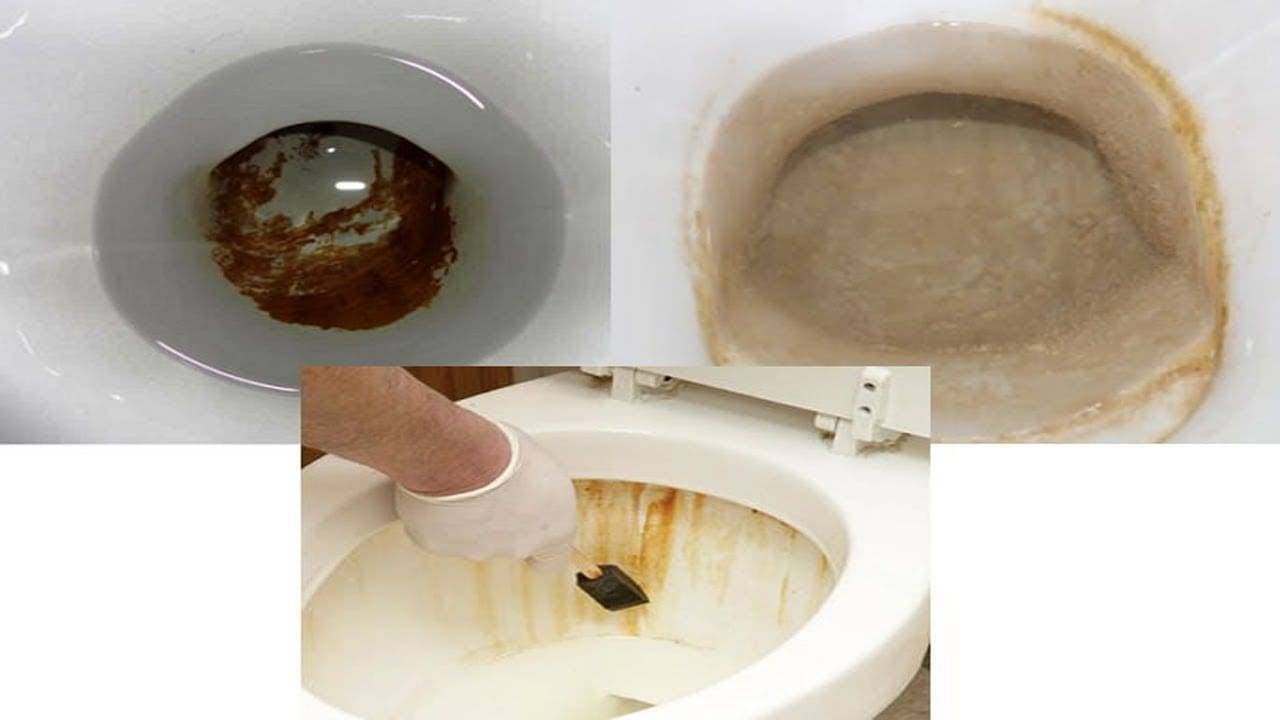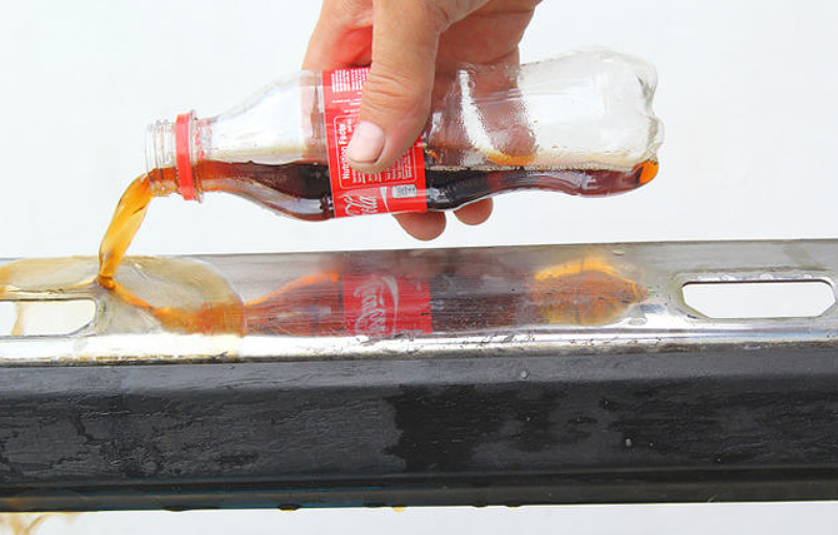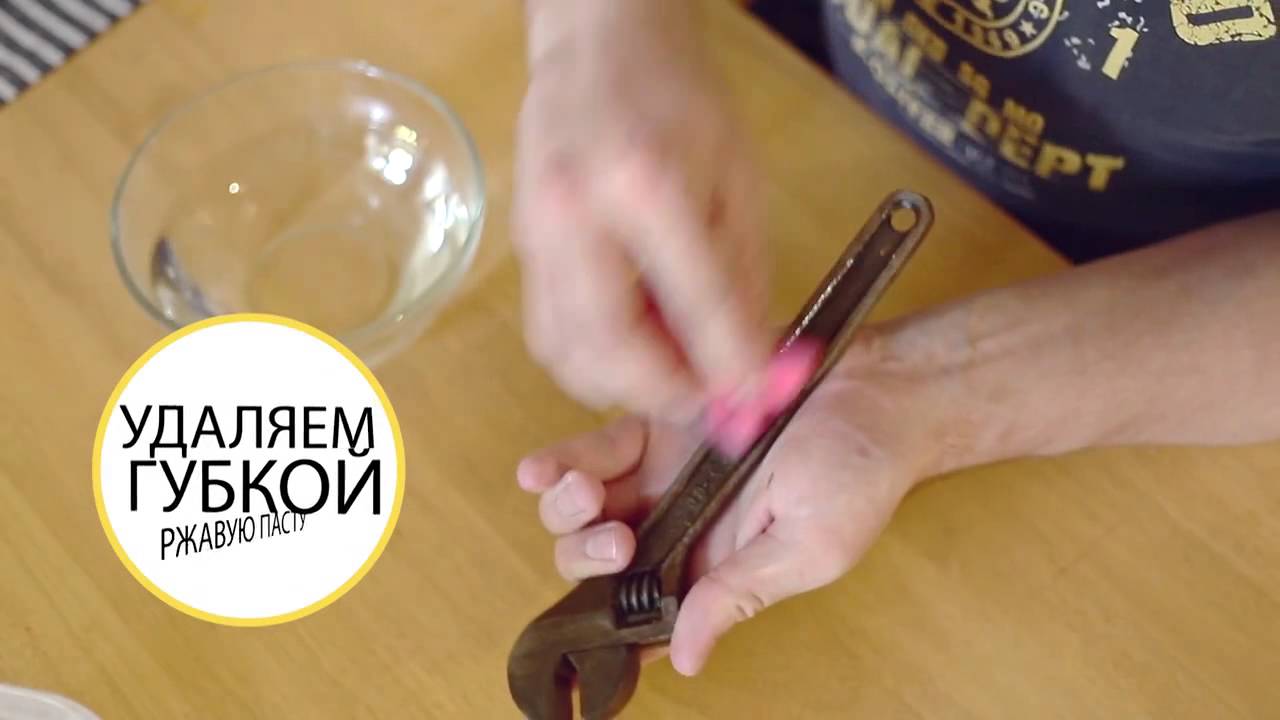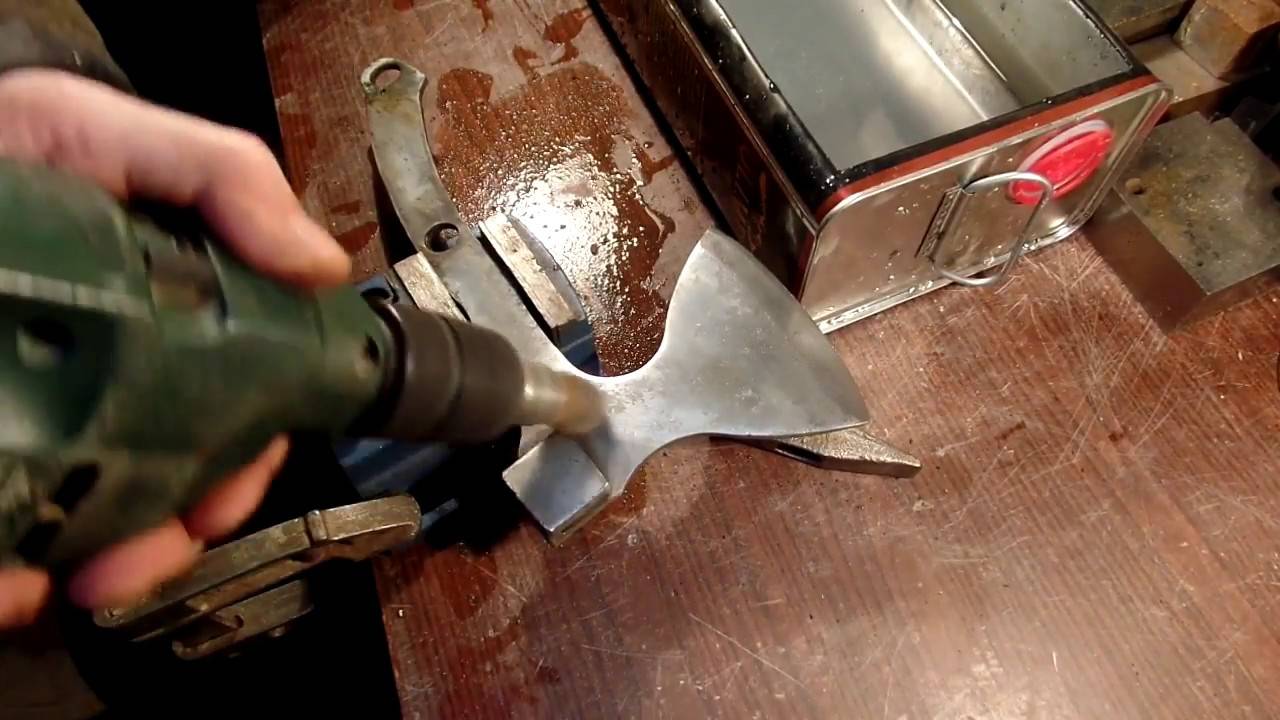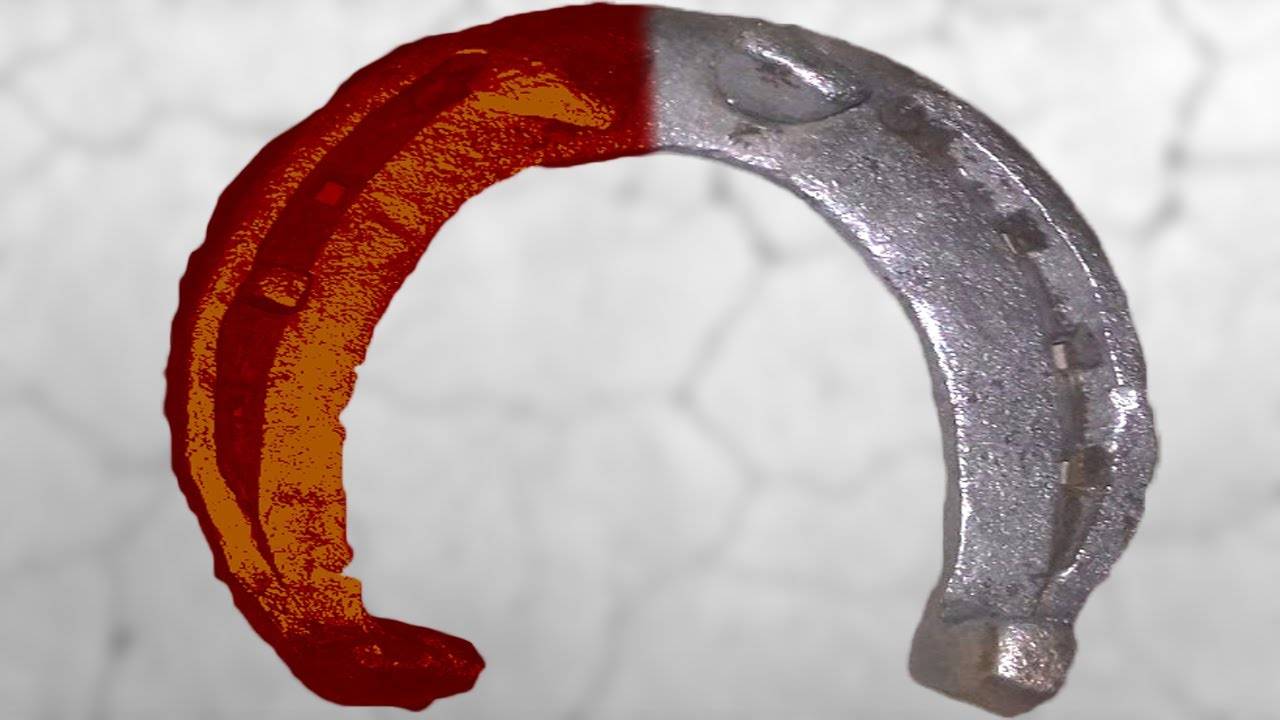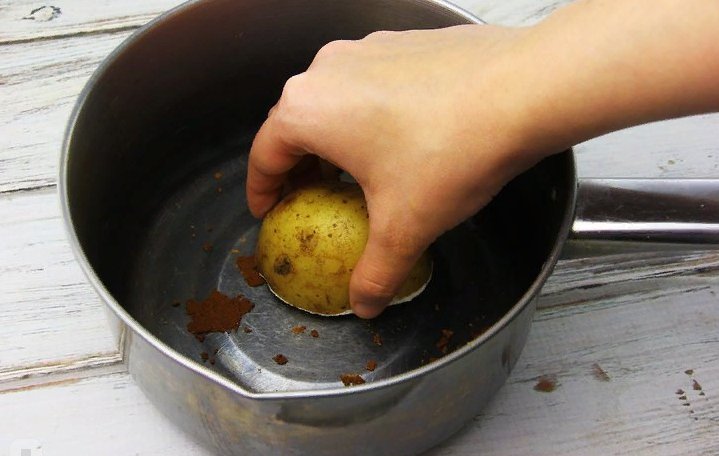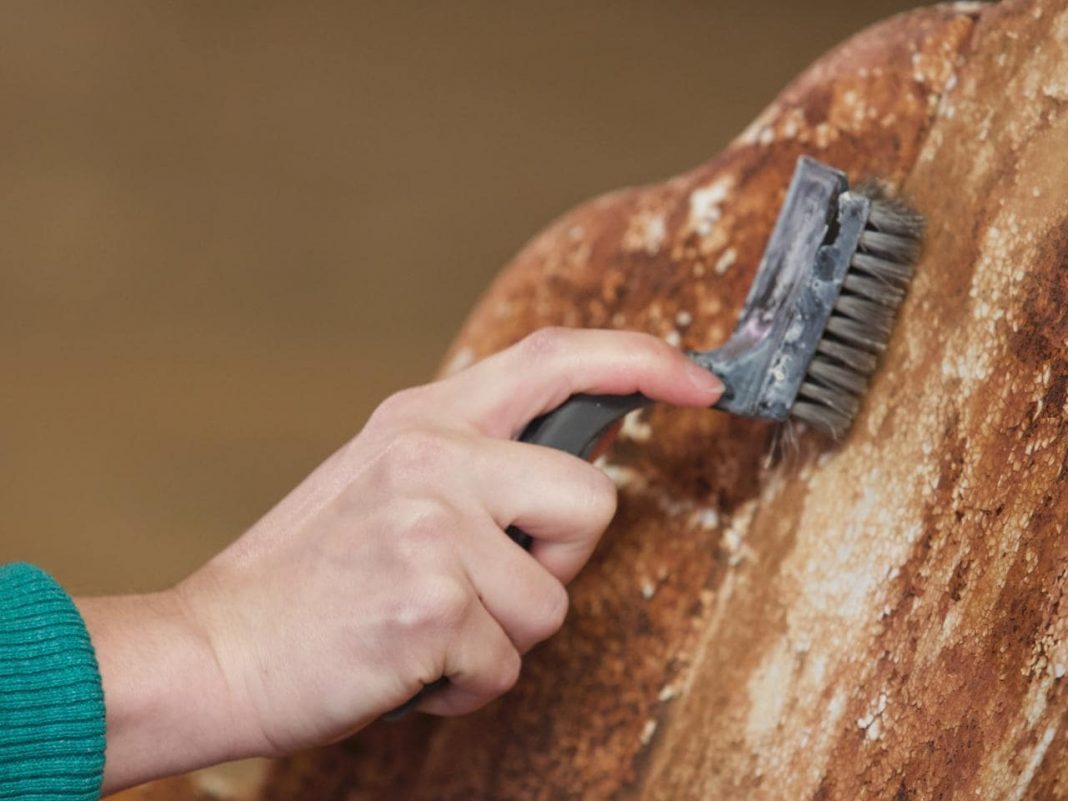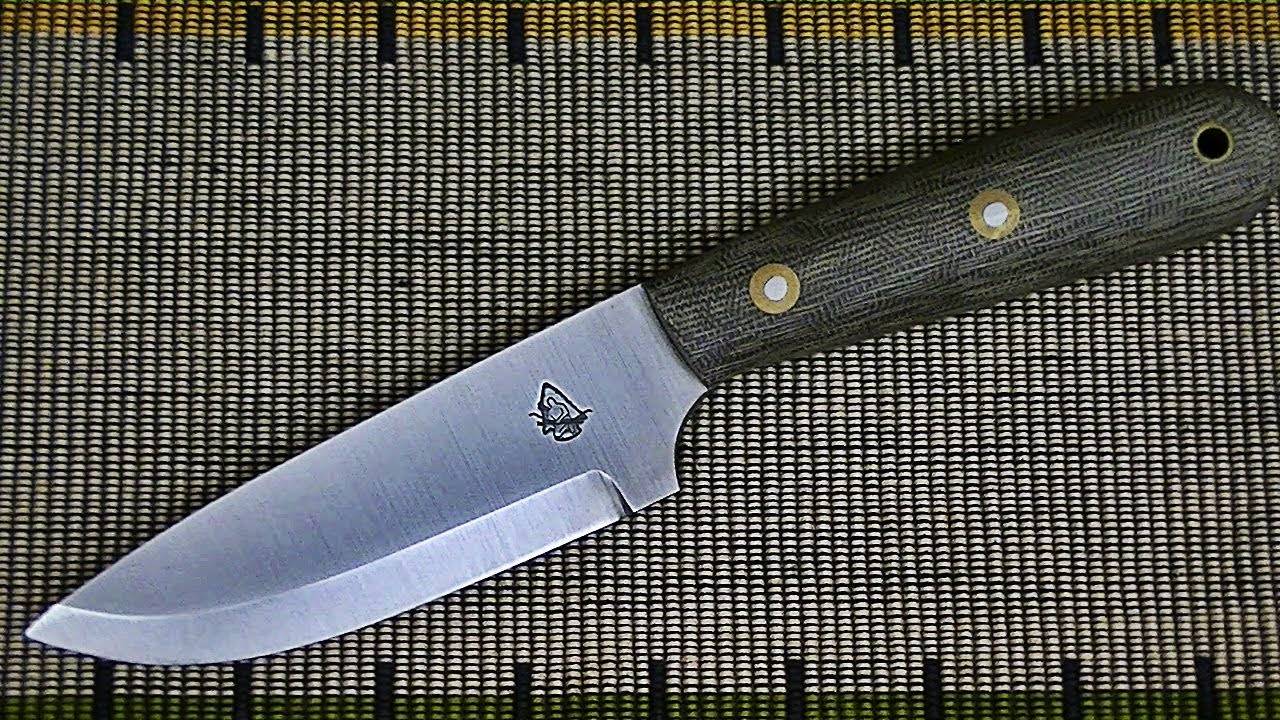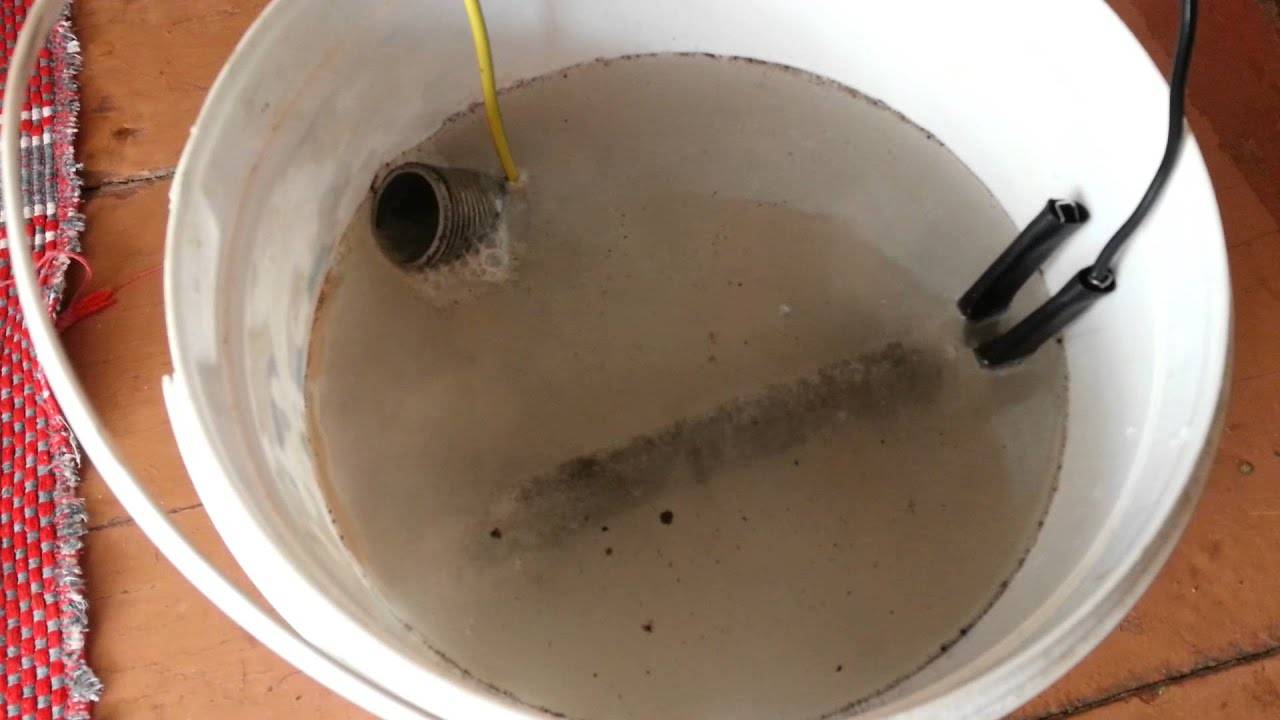Anti-corrosion agent with zinc
It is sold in spray guns and acts on corrosion no worse than acid solutions.
- Before processing with the agent, walk over the surface of the knife with iron wool or fine-grained emery paper.
- Rinse with running water.
- Degrease with alcohol solution. Thus, an optimal environment is created for the interaction of zinc with metal, during which rust leaves the knife.
- Use a plastic or glass container for prolonged soaking, with deep damage to the blade surface.
- For small spots, apply two coats with a spray bottle (you can use a brush). The first layer is a primer. It dries up in 5 to 10 minutes. The second is applied next.
- The remains of rust are removed from the knife with a scraper.
Corrosion Prevention Measures
They say that the blade of a knife does not rust, it should be used more often. This expression makes sense. A knife in constant use is regularly wiped, processed, and in plain sight. Meanwhile, a stored and unused specimen is at risk of corrosion damage to an equal degree. If you forget about it for a while and do not process and clean metal parts, then it will almost certainly rust. The fact is that moisture is found everywhere, including in the air. Gradually settling on the surface of the blade, it will inevitably lead to the oxidation of iron. Protective compounds, by the way, cannot retain their qualities indefinitely, they must be periodically removed, the knife cleaned and reapplied.
Many professional and hunting knife owners avoid prophylactic oil treatments. It is believed that oil is able to enter into additional interactions with various substances and harm steel. In this case, wax has established itself as a more reliable remedy. In addition, a knife that is used occasionally should not be stored in a sheath or sheath. Any unfavorable conditions, especially air humidity, in such a tight space will worsen, and the damage process will accelerate. In addition, the beginning of the process can be skipped by simply not seeing it. It is better to cover the knife when it comes time to take it with you on a trip, hunting, etc.
With the right approach and sufficient attention to the subject, corrosion can be avoided. It is better to spend time preventing the problem than dealing with it. Removing rust and preventing its appearance is a painstaking process that requires regularity. However, perhaps this is one of the few cases when caring for a thing is enjoyable and has a calming effect. The smooth, polished surface of the knife is the best reward for the owner's efforts.
Chemical methods of excretion
Chemical methods of removing rust are among the most effective. Below we will consider the most common options for cleaning surfaces from corrosion.
Sulfuric or hydrochloric acid
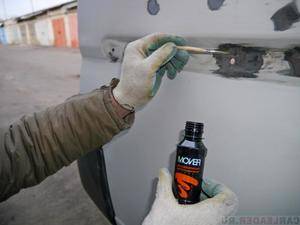 These metal rust removers are used in combination with inhibitors. To remove traces of rust, an aqueous solution of acid and urotropin as an inhibitor will be required. It is unacceptable to use such aggressive reagents without urotropin - the metal can be destroyed by the action of acids, and the product will be damaged.
These metal rust removers are used in combination with inhibitors. To remove traces of rust, an aqueous solution of acid and urotropin as an inhibitor will be required. It is unacceptable to use such aggressive reagents without urotropin - the metal can be destroyed by the action of acids, and the product will be damaged.
To remove corrosion from the surface of small metal parts, they can be immersed in a mixture of 5% solution of hydrochloric or sulfuric acid and urotropin at the rate of 500 mg per 1 liter of water. Large objects are treated with the same composition using a wide brush. You can get rid of rusty stains on a white fabric item with 2% hydrochloric acid. To do this, immerse the product in an acid solution and leave until the red spot disappears completely.Then the thing is removed and rinsed in a weak solution of ammonia. For its preparation, take 3 tablespoons alcohol per 1 liter water.
Potato tops can be used as an inhibitor. To prepare the composition, it is necessary to fill a three-liter canister with the tops of half and fill it with hydrochloric acid so that it covers the stems. The contents of the jar are constantly stirred for 20 minutes, then the liquid is drained and the damaged surfaces are treated.
Oxalic acid
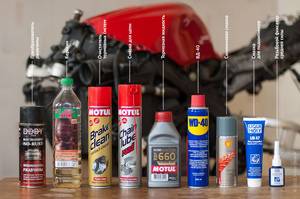 When working with oxalic acid, it is necessary to observe safety precautions - use protective goggles and rubber tight gloves. It is also advisable to use a respirator, since the vapors of this substance are very toxic. To begin with, rinse the rusted part with warm water and detergent and dry thoroughly. 6 teaspoons of oxalic acid are dissolved in 300 ml of water and a rusty object is immersed in the resulting solution for half an hour. The remaining plaque is removed with a brush. After processing, the item is thoroughly washed and dried.
When working with oxalic acid, it is necessary to observe safety precautions - use protective goggles and rubber tight gloves. It is also advisable to use a respirator, since the vapors of this substance are very toxic. To begin with, rinse the rusted part with warm water and detergent and dry thoroughly. 6 teaspoons of oxalic acid are dissolved in 300 ml of water and a rusty object is immersed in the resulting solution for half an hour. The remaining plaque is removed with a brush. After processing, the item is thoroughly washed and dried.
Phosphoric acid
Using a metal rust remover can turn a layer of corrosion into a dense coating. For this, an acid with a concentration of 15 or 30% is used. It is applied to damaged metal products using a spray gun and left in the open air until it dries completely.
For greater efficiency, 1 liter of phosphoric acid must be mixed with 5 ml of butanol and 15 ml of tartaric acid. As a result of processing, a strong protective film of iron phosphate is formed.
Lactic acid
If the object is severely corroded, you can treat it with a mixture of 50 ml of lactic acid and 100 g of liquid paraffin or petroleum jelly. Under the action of acid, rust turns into salt, which dissolves well in paraffin. Next, wipe the cleaned surface with a napkin dipped in vaseline oil.
Zinc chloride
In 100 ml of water, 5 g of this substance is mixed with 0.5 g of tartar. Under the influence of the acidic environment created by zinc chloride, rust will dissolve easily.
Lemon acid
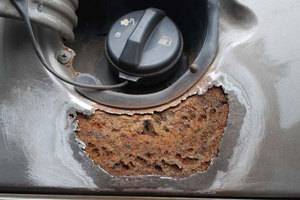 Citric acid powder is poured into a plastic container and filled with hot water. A rusted product is immersed in the resulting solution and left overnight. If the solution is prepared correctly, the liquid will begin to bubble and sizzle when it comes into contact with the rusted surface. In the morning, the product is removed from the solution, washed with clean running water and thoroughly dried.
Citric acid powder is poured into a plastic container and filled with hot water. A rusted product is immersed in the resulting solution and left overnight. If the solution is prepared correctly, the liquid will begin to bubble and sizzle when it comes into contact with the rusted surface. In the morning, the product is removed from the solution, washed with clean running water and thoroughly dried.
Rough cleaning of a knife from rust
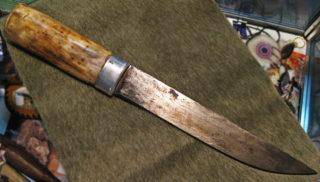 Rusty blade can be sanded
Rusty blade can be sanded
Before starting work, assess the degree of damage: how much the steel has oxidized and what is the area of the surface affected by rust. Coarse cleaning makes sense in case of strong oxidation. With the help of tools, you can only get rid of the top layer of rust. The remaining deposits will have to be removed using cleaning agents.
Mechanical work is carried out according to the general scheme:
First, the oxidized metal must be prepared and softened. For this, non-aggressive agents are used, for example, kerosene or white vinegar. The reagent is poured into a mug and a rusty knife is kept in it for 10 to 15 minutes.
Then you can start cleaning. If the dirt is thick enough, you will need to use a chisel with a small hammer or similar tools. Beat off carefully, trying not to damage the metal.
The remaining oxidation particles must be sanded with sandpaper. A metal brush from a local hardware store is also suitable for removal. It is not recommended to work with emery if the deformed layer of iron is too thin
Scratches are inevitable from such cleaning, which in turn accelerates corrosive processes.
If there is severe contamination with deposits, electronic devices will help, the hydrolysis method is the combined use of a solution with reagents and a device that passes a current through it.
At the last stage, it is important to make sure that there are no dust and particles of rubbed deposits. If they remain, corrosion will show up and grow again.
If done correctly, the knife will look like new.
Bath cleaning
Sometimes it is required to clean non-metallic objects from rust, which are not very convenient to handle with the listed methods. Rusty streaks can form on the surface of sanitary ware. To clean the bath from rust, you can use a wide range of special products, which are currently widely represented on the Russian market (Sanox, Fenolux, Akrilan). Using a brush, a sponge is applied to the surface and kept for 5 minutes, sometimes longer. Then they are washed off, while treating the bath with a brush.
There are also traditional home bathroom rust removers. As a remedy for rust, simple components such as soda, salt, vinegar can act. One method recommends applying equal proportions of soda ash and baking soda to the surface of the tub, then sprinkling it with a bleach / vinegar mixture. After 30 minutes, clean with a sponge and rinse with water.

Another way is to add salt to acetic acid and microwave it all. Then moisten a napkin with this mixture and wipe the bath. After 20 minutes, wash off with water. There is also a method in which ammonia and hydrogen peroxide are mixed in a 2: 1 ratio and then the resulting solution is applied to the enamel surface for 20 minutes, and then washed off.
To clean the toilet bowl from rust, industrial products are used that are specially sharpened for this problem: Komet, Sorty, Pemolux, Sanita. These are abrasive products. You can use alkali-based products: Dosya and Domestos. These substances do not injure the surface of the toilet bowl and do not require much physical effort: after applying the product to the area, leave it for 15-20 minutes, and then rinse it off. Comets and dressing ducklings contain acids.
Removing rust by electrolysis
 The method is effective but dangerous. Therefore, it should be used only in the most necessary cases, if it was not possible to cope with rust with the help of folk remedies and special chemicals.
The method is effective but dangerous. Therefore, it should be used only in the most necessary cases, if it was not possible to cope with rust with the help of folk remedies and special chemicals.
To remove corrosion, proceed as follows:
- Fill a plastic container with warm water.
- Add 2 tbsp. l. soda or salt.
- Get a car battery charger.
- Attach a metal plate to one wire, and a corroded object to the other.
- Lower both ends into the container and turn on the device for half an hour, setting the amperage to 4-6 amperes.
- Remove rust residues with a brush or sponge.
Cleaning with folk remedies
If you don't want to suffer with mechanical rust removal, then you can use proven folk methods.
Acetic acid
Better to use 70% acetic acid. Then the result will be more tangible. If there is a little rust, then sometimes ordinary table vinegar of 9 percent is enough.
To remove corrosion and "time plaque", you need to follow a few simple steps:
- Pour the required amount of acetic acid into a deep container so that it completely covers the instrument.
Healthy! The best way to do this is to use a plastic container with a tight lid.
- Place rusty items in a container and close everything with a lid.
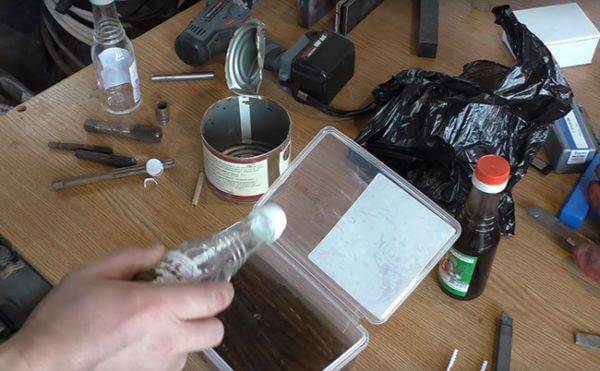
Screenshot
The instruments must be left in this state for several days (the duration of cleaning depends on the intensity of the contamination). Then you can open the lid. Peeling rust will be clearly visible under it.
Important! After cleaning the parts with vinegar, rinse the tools in a baking soda solution to remove the acidity.
Citric acid and hydrogen peroxide
100 ml of water will require 20 g of citric acid (two packs) and 10-15 ml of peroxide.If you add more citric acid, you get a more concentrated composition, which is also acceptable.
Healthy! Citric acid without hydrogen peroxide is also effective against old rust.
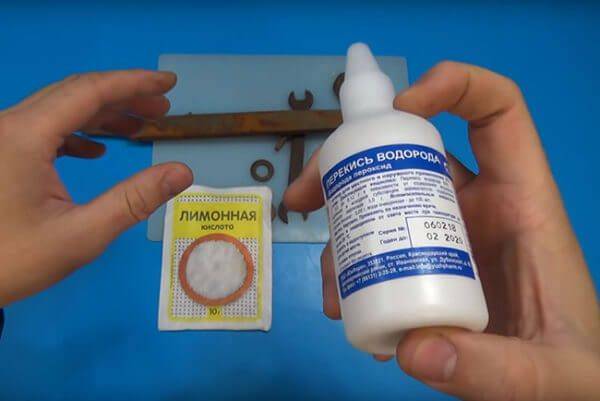
Screenshot
The cleaning procedure is very simple. First, we mix the composition in a container and put the tool in it. After that, we leave everything to soak for 24 hours (nevertheless, the first result is visible after a few hours). The liquid becomes dark and the amount of rust decreases.
The main advantage of this method is that the used solution does not need to be discarded. It is enough to strain it through cheesecloth or cotton cloth and use it for other old instruments.
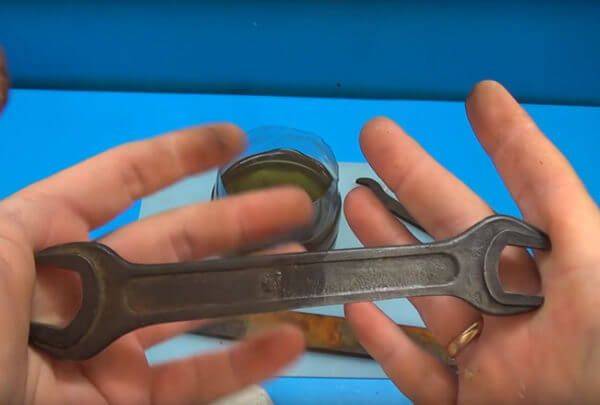
Screenshot
Healthy! It is desirable to purchase hydrogen peroxide with a high percentage of the active substance. However, 3% peroxide will be sufficient to remove the rust.
Coca-Cola
Many people use this carbonated drink to clean stoves, plaque in a teapot and much more. Coca-Cola is also suitable for small tools, screws, dies. Cleaning is very simple:
- Pour Cola into a container (for example, a glass jar).

Screenshot
- We put the rusted part in the liquid.
- We close the lid.
- We leave for a day.
Lemons
For cleaning, just cut a few lemons and squeeze the juice out of them into a container. After that, we lower the part into it. It remains only to close the container with a lid, and wait a day.
If we talk about the effectiveness of lemon and Coca-Cola, then a carbonated drink will cope only with very fresh rust. Lemon is the most effective, but getting enough lemon juice to clean a hammer or other large tool can take a lot. It is much cheaper to purchase citric acid.
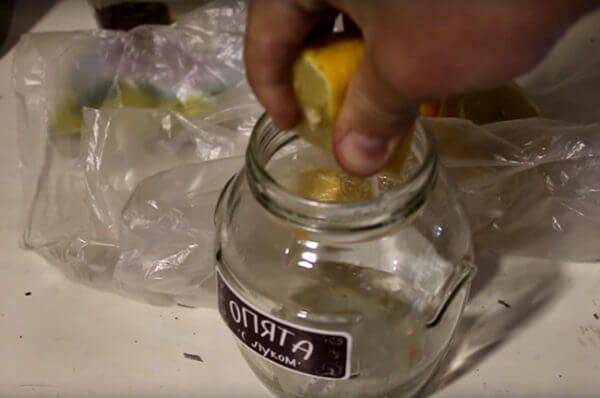
Screenshot of a video from the channel Man with hands
Sulphuric acid
This substance does an excellent job with oxidation. However, before using such a tool, you need to dissolve sulfuric acid in water so that its density is 1.15 g / cm3
This is an important condition, since at an increased concentration of a substance, not only corrosion will be destroyed, but also the metal itself.
Important! You can work with sulfuric acid only with protective gloves, goggles and a respirator. After preparing a solution of the required density, it is enough to dip the part in it for 20-30 minutes
After that, you need to clean and rinse the instrument well.
After preparing a solution of the required density, it is enough to dip the part in it for 20-30 minutes. After that, you need to clean and rinse the instrument well.
The process of removing rust from metal at home.

Having cleaned metal objects with a brush from loose rust, I placed them in a plastic bath. It took 2.5 liters of water to completely cover them. For this amount, I poured 200 grams of lemon. Then he stirred it until it was completely dissolved, immersed our "experimental" again and left the solution to "work". I put the second sleeve vertically on purpose, so that later I would show the result as in an advertisement for toothpaste: “We will smear the right side of the egg with ordinary toothpaste, and the left side ... ..”))).
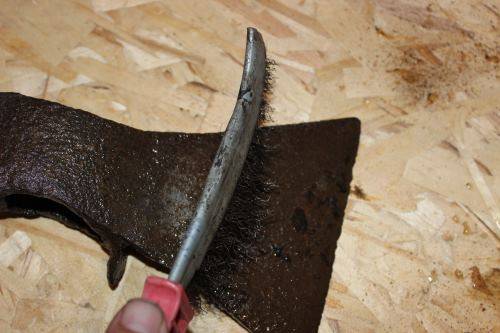
The citric acid solution gradually eats away the rust layer by layer. To provide acid access to subsequent layers after 2-3 hours, I take out all the objects and brush off the corroded layers with a metal brush. It takes no more than 5 minutes, but the result is much better. Then every hour I repeat this procedure 3-4 more times. The photo shows the cleaning of the ax after 2 hours in the solution. As you can see, the effect of the solution for removing rust from metal is already visible to the naked eye.
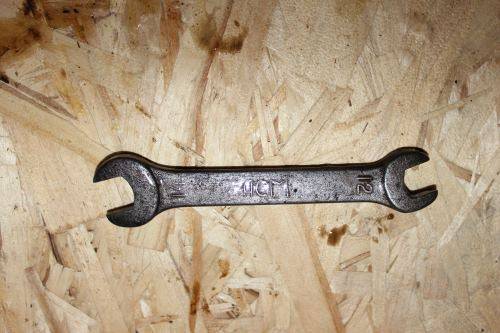
It is necessary to clean off the eroded layer only for deeply ingrained rust. I had the key in the open air for several months, so the rust did not have time to penetrate as deeply as in an ax or a sleeve. It only took him 2 hours to completely get rid of the rust. The result can be seen in the photo. I took out the key, and the rest of the items continued to lie in the solution.
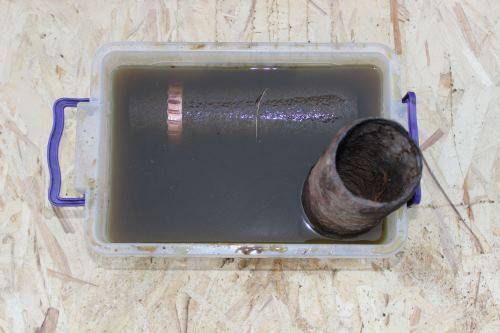
A day later, the clear solution accumulated a large amount of corroded rust and became very cloudy. Now we again clean all the items with a metal brush from the remnants of rust, rinse them in a solution and look at the result.
How to protect the blade from corrosion: prevention
 Always wipe off the knife after use.
Always wipe off the knife after use.
To prevent the knife from becoming covered with rust, you need to take care of its storage. The oxidation process occurs as a result of exposure to moisture on the metal, as well as due to some trace elements remaining on the surface of the blade.
To reduce the rate of deformation, it is necessary to ensure careful operation:
After use, the blade should be washed and dried with a towel.
First, it will remove food debris on which microbes settle, accelerating the chemical reaction; secondly, it will reduce the rate of oxidation due to the elimination of moisture.
If the weapon is stored in a case, it is important to prevent moisture and dirt from accumulating inside the case.
When the blade is not intended to be used, it is carefully preserved. The tool in use is constantly subjected to friction processes
It washes, wipes, does not stagnate for a long time, so carbon steel does not rust so quickly.
For preservation, it is better to use wax rather than oil. The latter reacts with any steel, even damask steel, and can damage it.
It is not recommended to keep knives near a sink, stove, or radiators. Steel is badly affected by high humidity or excessively warm air.
Corrosion formation over time is a natural process: it is caused by various chips and microcracks on the surface. Therefore, during operation, you must try to avoid mechanical damage to the tool.
You can also use a folk remedy to prevent a defect:
- Mix 2: 1 lactic acid with liquid paraffin.
- Apply the mixture to the blade in a thin layer.
- Leave the knife out of direct sunlight for 10 minutes.
- Gently wipe off the composition with a dry cloth.
After such processing, the blade can be stored for a long time without fear of corrosion.
Keeping your knife properly stored will keep it rust-free without having to use drastic methods to clean it.
Mechanism for removing traces of corrosion
First of all, it is necessary to assess the condition of the knife, the degree of corrosion damage. The whole procedure consists of the following steps:
- to act on the steel elements of the knife with an acid-containing substance (or special agent);
- remove traces of rust from them;
- clean the blade;
- treat with oil or wax to protect against re-spoilage.
If corrosion has formed shells on the surface of the blade, then you may have to resort to fine sanding followed by polishing. However, let us consider the mechanism in more detail.
Having found rust on the knife blade, you need to do the following. To begin with, mechanically remove all impurities by thoroughly wiping the knife with a coarse cloth, having previously moistened it with a cleaning liquid. Then the liquid must be applied to the blade, soak a rag with it, wrap the knife and leave in this position for several hours. You can use vinegar or kerosene as such a cleaning agent, or you can buy a special composition, for example, a rust converter.
After this time, you should unfold the knife and remove all excess with steel wool. After that, it must be wiped with a coarse cloth soaked in oil, cleaned to full shine. To protect the knife from re-attack by corrosion, it must be coated with a protective agent, such as oil or wax, and then monitor it, periodically clean, lubricate, and do it regularly.
What if you find that the stains have not been removed completely? In this case, the procedure should be repeated.You can try to remove rust in other ways, which, fortunately, abound.

Aspirin can help remove rust from a knife

